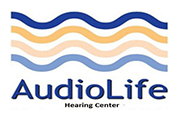
Hearing aids, as with many other devices, are getting smarter, less conspicuous and cooler every day, and just in time. The U.S. census documents that the average American is older as the population as a whole continues to age, and loss of hearing is, sadly, very common, especially in older adults. Approximately 37.5 million adults in America say they have some amount of hearing loss, and these numbers are increasing.
The good news is hearing technology has had some exciting breakthroughs recently that will provide more possibilities for dealing with loss of hearing. Here are just a few of the developments coming our way.
Your Overall Health Can be Tracked by Your Hearing Aids
Did you realize that hearing aids can keep track of some important vital signs as well or better than a fitness tracker? Not only can it track step count, how many calories were burned, the total number of steps you took and heart rate, it also monitors the time in between heartbeats to help find any cardiovascular concerns. They are even developing technology that can measure blood pressure, oxygenation of the blood and other relevant vital signs. There are other possible advantages that come with hearing aids, including the ability to help drown out tinnitus and will improve your social life by bettering your general hearing. Actually, social engagement has been linked to your general health as well, so really it’s another health metric we should be following. Since hearing aids can now also sync with your smartphone so you can listen to your tunes, who needs a smartwatch or fitness device?
Streaming Made More Intelligent And Easier
Staying connected to your virtual assistants like Siri or Alexa is becoming more important as people get more addicted to these features. Even if you ignore the lure of talking directly to these assistants, hearing aids that have Bluetooth permit you to stream sound from any Bluetooth device such as your phone or smart TV. Just consider the benefits: You could hear the play-by-play in the big game clearly over your family’s fun (or at least avoid getting yelled at for turning the volume too loud). You will be able to manage your loss of hearing more discreetly and also appreciate your music, phone calls, and shows more by hearing them directly in your ears.
Automatic Adjustments
Have you noticed that you get ads from Goodreads and they seem to already know what type of books you enjoy reading? Or how all your favorite kinds of things get promoted to you by Amazon? That’s because big data and artificial intelligence are very powerful. Current hearing aids can also make changes automatically based on your responses in the past. It will remember that you turn the volume down when you enter the train station and do that automatically the next time it recognizes you’ve entered the station (or any other circumstance with a lot of background noise). They are extending this technology to include crowdsourcing also, allowing information from other users to notify your hearing aids that you’re approaching a loud zone. Over time you will be able to adjust quickly to variations in the hearing environment because your hearing aid will make recommendations based on all the information it has gathered.
What? No More Little 312 Batteries?
Why would you want to constantly struggle with hearing aid batteries? Rechargeable hearing aids are currently on the market. While you can do a lot to help increase the life of your hearing aids’ batteries, let’s face it…it’s still aggravating and costly. Better still, technology to recharge your hearing aids while they are still in your ears is being developed.
